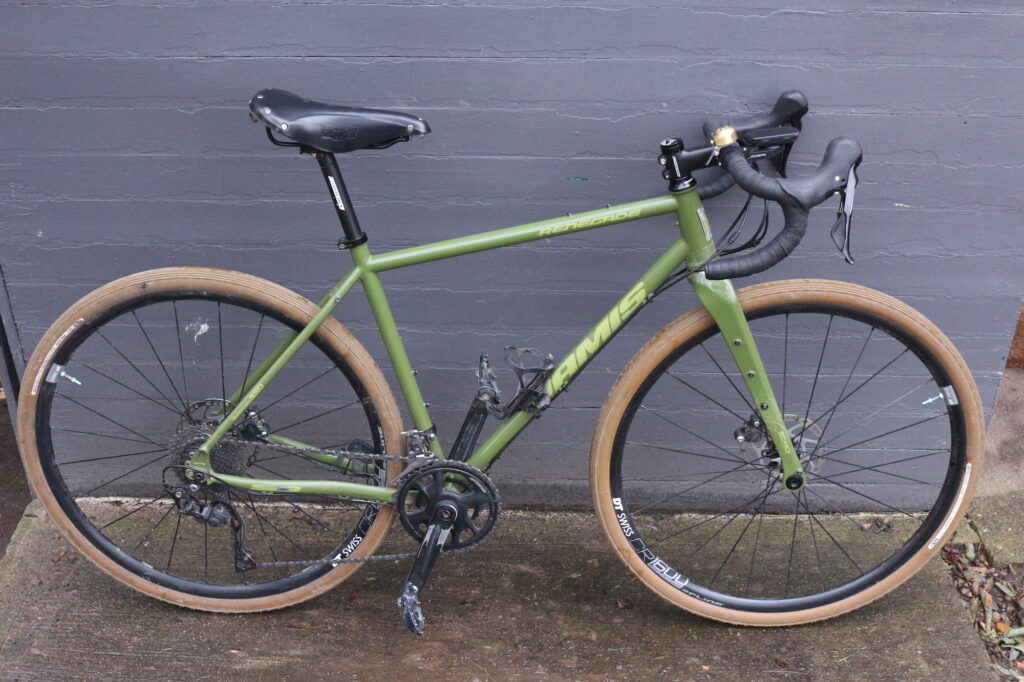
Review: 2021 Jamis Renegade S3
The Jamis Renegade S3 is a mid-range steel gravel (or “adventure”) bike. I purchased a Renegade S3 new in early 2023, and have since put about 5,000 kilometres on it through all seasons and and on most surface types. I use the S3 primarily for road, gravel, and single-track riding, as well as bikepacking and fully-loaded bike touring. In this respect, the S3 is truly an all-around bike; it’s capable of doing all of these types of cycling well. Overall, I think the Jamis Renegade S3 is a solid bike for its price, and I would recommend it to anyone looking for a gravel, touring, or “all-road” bike. Below is a more detailed analysis of the 2021 version of the Renegade S3.
Overall Ratings
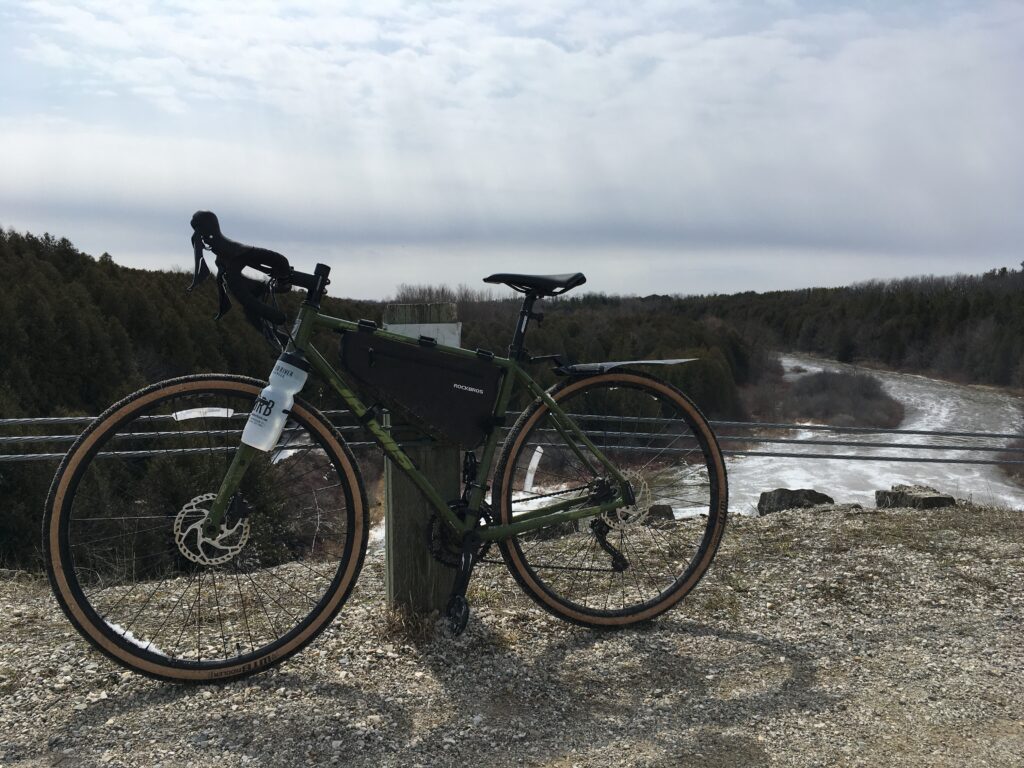
Frame & Geometry
The S3 is a steel bike. It’s heavy, but extremely stable and smooth. I purposely bought the steel version to be able to handle heavy touring loads when riding with front and rear panniers, and because I wanted a frame that would last me a long time. Having owned both aluminum and carbon frames, I have come to prefer steel for long-distance and fully loaded rides; it takes the bumpy vibrations out of the road that aluminum does not, and it feels much more sturdy than a carbon frame, especially when carrying gear and bags (although I still prefer carbon for all-out speed).
Overall, the geometry of the S3 is comfortable—I can ride this bike for a very long time; I am about 5″10 and ride the size 54 frame. What the steel Renegade gains in comfort however, it lacks in speed; I enjoy fast gravel rides, and the more upright geometry of the S3 compared to more race-inspired gravel bikes does put it at a speed disadvantage, even with the stem all the way down and riding in the drops all the time. The added weight of the S3 also becomes apparent on long rides when climbing hills, when compared to other riders of similar fitness on lighter carbon bikes. However, if you aren’t a competitive racer and you’re looking for a frame for touring, bikepacking, and general gravel, trail, and road riding, the S3’s frame is a great choice and I have been very happy with it. But that isn’t to say you can’t race with it…you absolutely can; I spin out on this bike at around 60-65 km/hr.
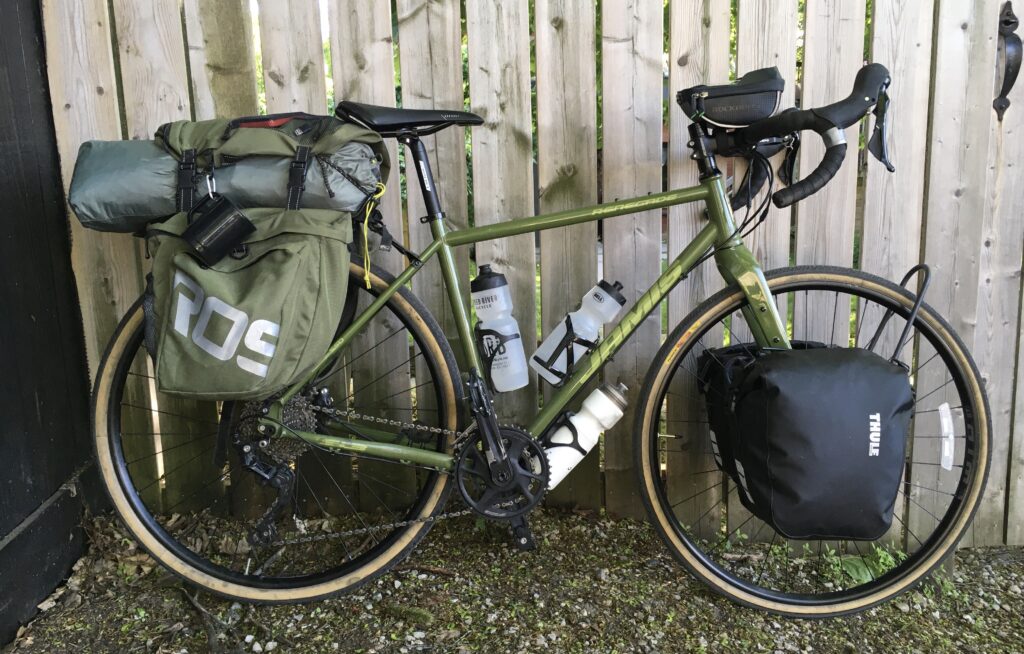
The Renegade has a lot of mounting points for bags and accessories, and a lot of tire clearance for both 700c and 650b wheels (50mm and larger, respectively). The carbon fork reduces the weight of the bike slightly and has nice, comfortable feel on rugged terrain. I would not recommend riding mountain bike trails with jumps or larger drops with this bike; the carbon fork does not seem designed to handle that level of impact—Jamis recommends the bike only be dropped of curb, or step-high, bumps while riding. The frame is fine for all weather conditions, though I try to avoid riding a steel frame on Canadian salted winter roads, and you do need to keep an eye on the frame for internal rust, of which I have had some already due to riding the S3 in wet conditions.
The steerer the Renegade ships with is quite long, which is nice if you prefer more upright riding. Eventually, I ended up cutting it down fairly low when I was sure of my personal preferences for riding position with the S3’s frame.
Groupset & Gearing
In my opinion, the gearing ratio on the S3 is perfect for a gravel bike, and better than the S4 or S2 one-by setups despite the slight weight penalty of a two-by crankset. With a 32-46 two-by crankset and an 10-speed, 11-36 cassette, I have no problems tackling steep hills with a fully-loaded touring setup, and the lowest 11-46 combination is quick enough for almost all the riding I do, save for some quicker spinning down very steep hills. The GRX shifters and derailleurs are excellent, as are the GRX hydraulic brakes and Shimano rotors. The FSA crankset is also solid, but a bit heavy. In my opinion, the best value of the S3 lies in these components and its frame.
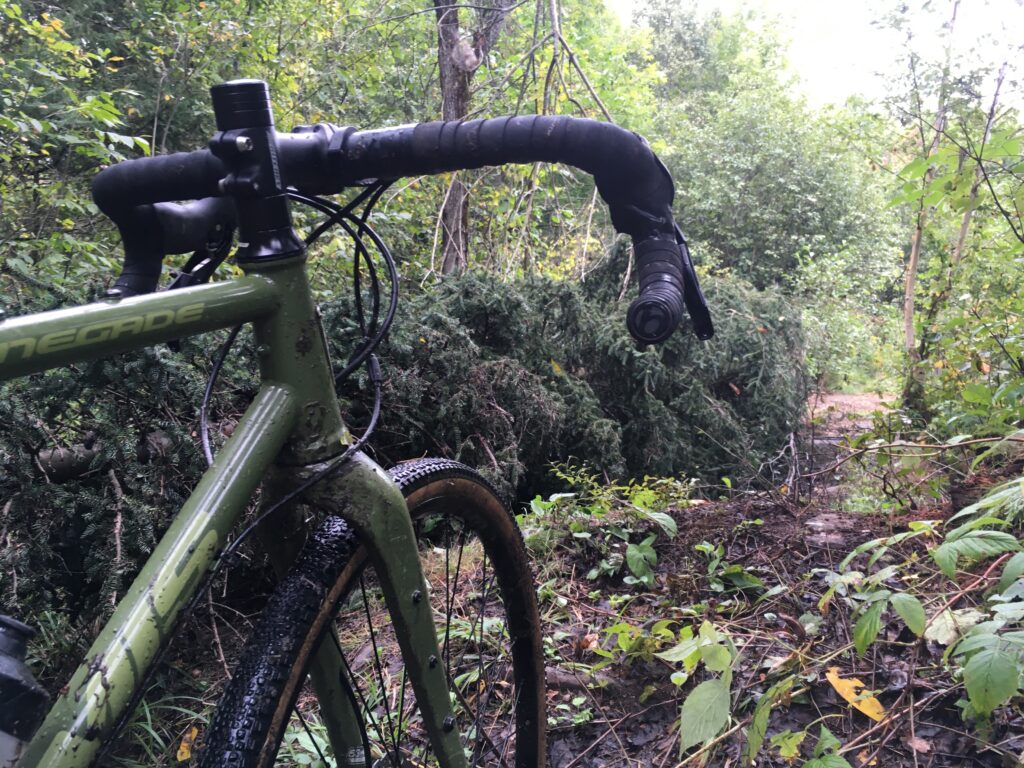
Saddle
The stock Selle Royal Asphalt saddle is actually quite a nice shape and I found it comfortable enough for a stock saddle, although saddles are highly personal.
Handlebars
The stock Ritchey bars are nice for gravel riding, but were a bit too wide for my taste at 44cm with a pretty aggressive flare angle for the drops. At the end of the season, I swapped the stock bars for cheap, 38cm aluminum bars with almost no flare angle, which I like much more for my style of riding.
Paint & Cable Rub
Normally paint is not something I personally think much about on bike frames, but unfortunately some wear on the Renegade S3’s frame has caused me to question the design of the cable routing against the front of the frame. The S3 has externally routed cables from the cockpit to the rear of the bike—a positive for me for easy maintenance. However, partly due to how the bike has been designed and potentially the type or quality of the paint, my S3’s brake and shifting cables have already rubbed all the way through the clear coat and base layer on both the steel frame and carbon fork, exposing the raw steel and carbon layers, in less than one year of regular use. I have since covered the areas with clear tape to prevent the cable housings from rubbing the frame, but it was a bit too late, and changing out the tape is an annoying bit of regular maintenance on the bike.
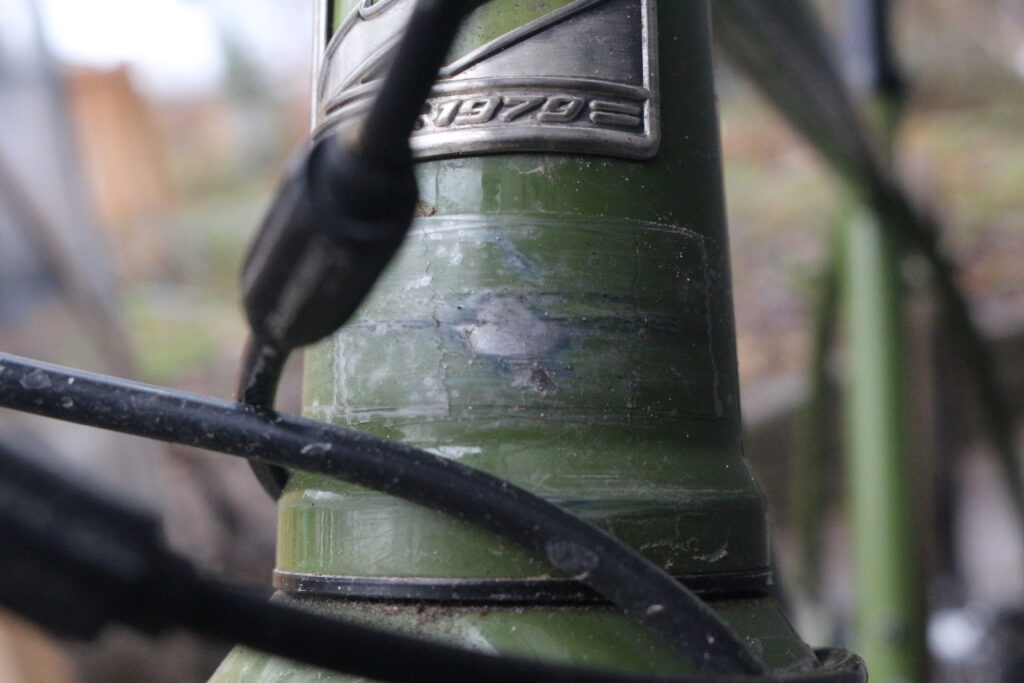
Wheels
The S3 came with WTB ST i23 wheels with Joytec hubs and 160mm Shimano SLX rotors. These wheels are fine for casual riding, but after 6 months the rear hub began grinding heavily and I had to get them serviced. Upon servicing, I was told that there hubs were already pitting slightly and had to replace all the bearings. These wheels are also not initially tubeless, though they are tubeless-compatible. Once you install some tubeless tape, purchase valves, and upgrade the tires they are good to go, but this will set you back at least a couple hundred extra dollars in Canada. Overall I was not a huge fan of these wheels, mostly due to their heavy and sluggish feel. I have since upgraded to DT Swiss GR-1600s, which are much better; they are considerably lighter, and faster-rolling than the stock WTB wheels (but also considerably more expensive). The WTB wheels are strong, however; I did not break any spokes or damage the rims on them even through a season that included rough off-road rides, and they are still as true as when I purchased the S3. I do like the 6-bolt Shimano SLX disc brake rotors that came stock on the S3’s original wheelset; they are light and brake very well with the GRX calipers. The pricier Renegade S2 comes with Boyd wheels that look much better than the WTBs—this is a likely a significant contributor to the jump in price between the two steel models.
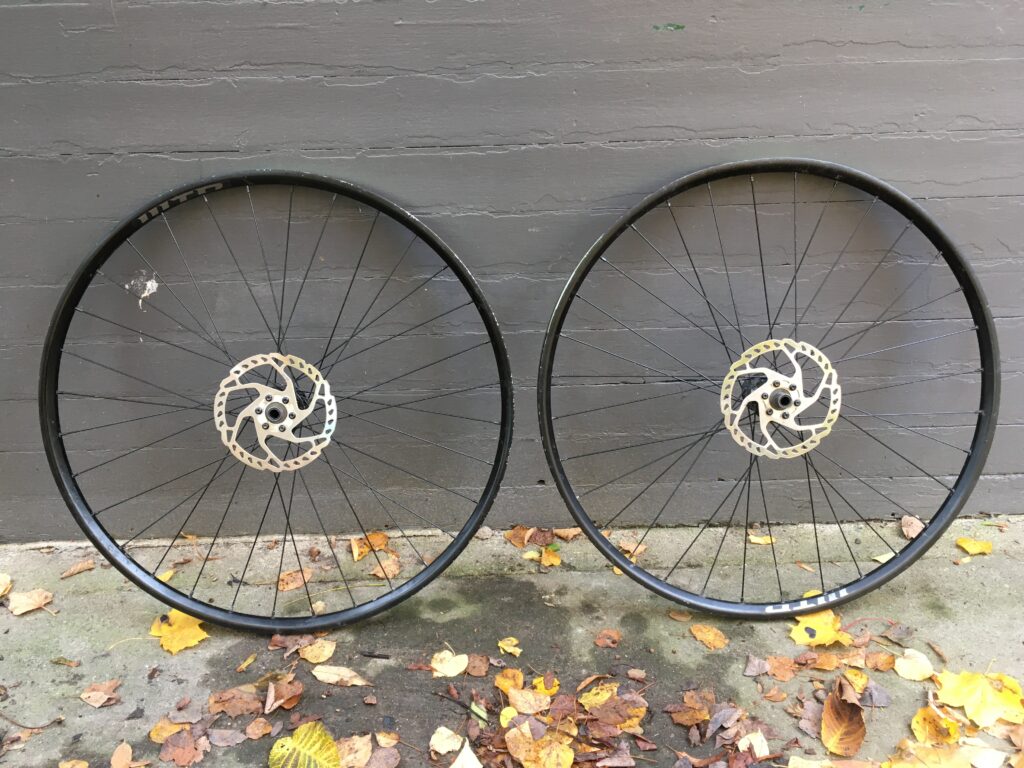
Tires
The 37 x 700c WTB Riddler tires that came stock on my S3 were okay, but the sidewalls punctured easily and they were not tubeless-compatible. I upgraded to tubeless Panaracer Gravel King SS tires, which I like more. The Riddlers have a nice tread pattern for road and light gravel riding but are not suitable for tubeless setups—I was misled by the Riddler version on the WTB site, which are tubeless-ready. Although I was skeptical about tubeless initially and they are unquestionably more of a pain to set up, tubeless offers a faster and more comfortable ride for off-road routes. If you run the pressures too low with tubes you get pinch flats easily on surprise bumps (as I did with the Riddlers), and if you run them at their recommended pressure, you get fatigued much more quickly from the bumpiness of surfaces transferring through the frame more heavily.
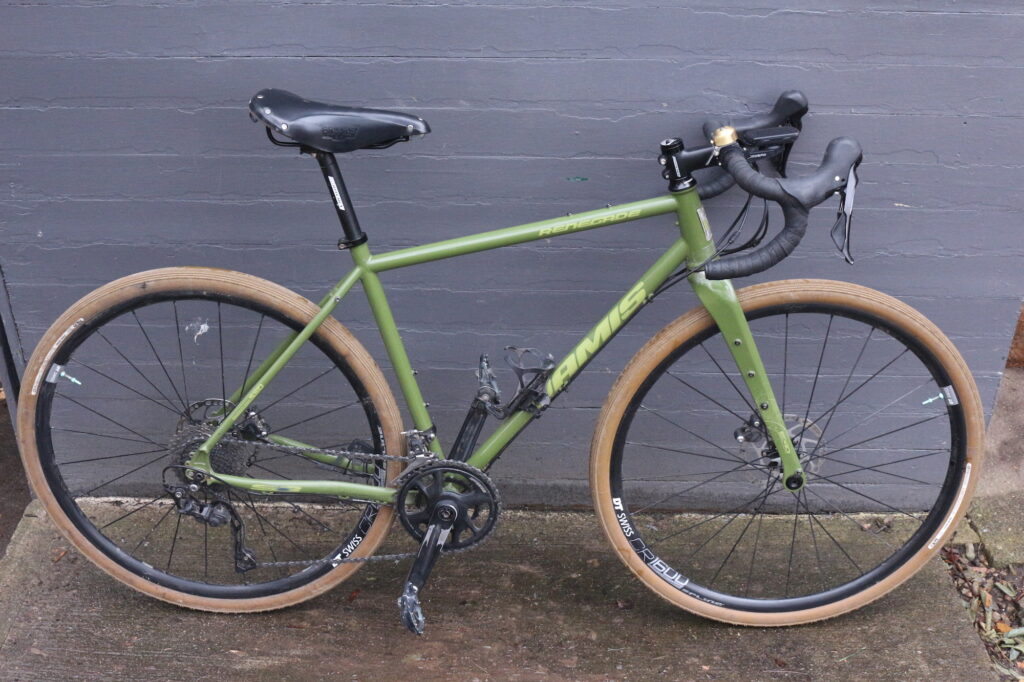
Overall Summary
The Jamis Renegade S3 is a great bike for its price, I would not hesitate to recommend it to anyone interested in a touring, bikepacking, or general gravel-riding “adventure bikes”. With some minor upgrades, it can really shine and compete with bikes in much more expensive tiers. After 5,000 kilometres of riding, these are the final parts I ended up upgrading or changing from the original S3, which in all have added up to about $800 CAD of new and used parts (the most costly being the upgraded wheels at $500):
- Wheels
- Original: WTB ST i23 w/JoyTec hubs
- Upgrade: DT Swiss GR-1600
- Tires
- Original: WTB Riddlers 37 x 700c (tube-only)
- Upgrade: Panaracer Gravel King SS 38 x 700x (tubeless)
- Brake rotors
- Original: 160mm Shimano SLX 6-bolt rotors
- Upgrade: 160mm Shimano Deore centre-lock rotors
- Handlebars
- Original: 44cm Ritchey Baquiano Gravel Handlebar
- Upgrade: 38cm no-name Amazon aluminum drop-bars
- Saddle
- Original: Selle Royal Asphalt
- Upgrade: Brooks B17 Narrow
- Pedals
- Original: (none)
- Upgrade: Shimano SPD PD-M540
- Cut steerer